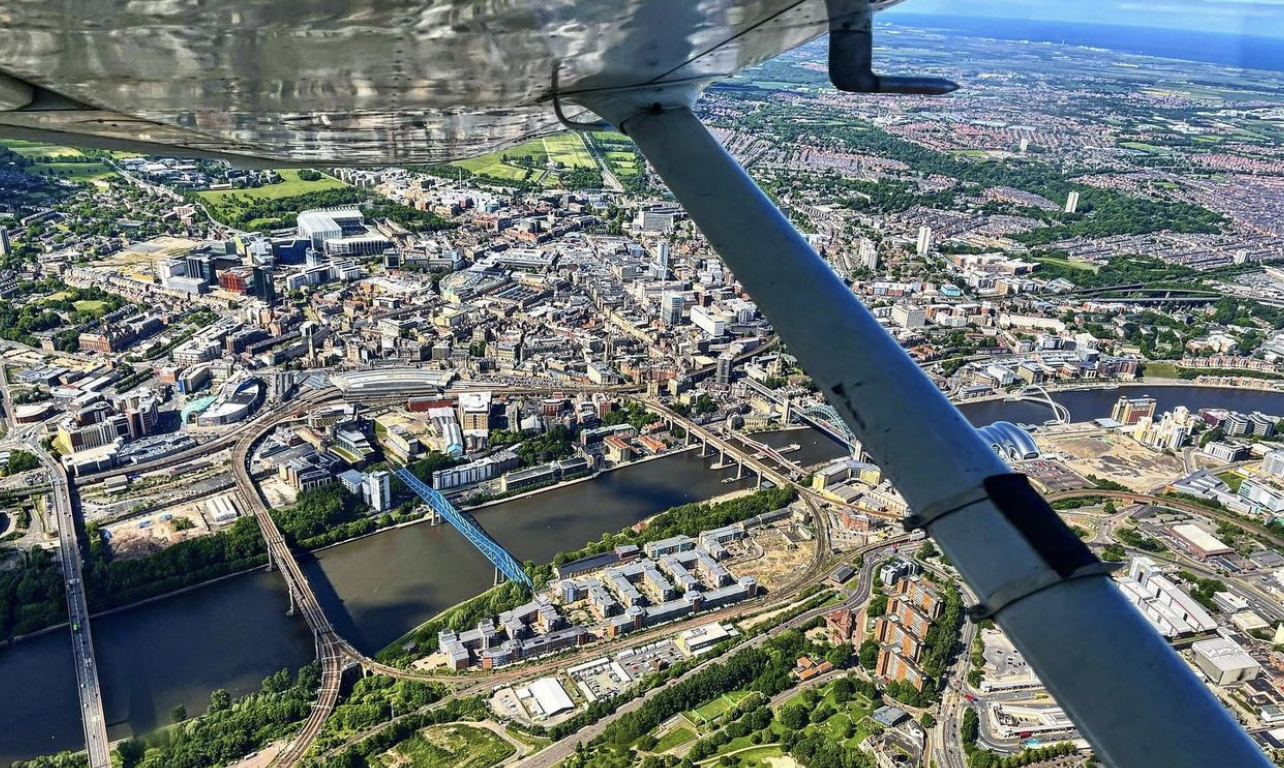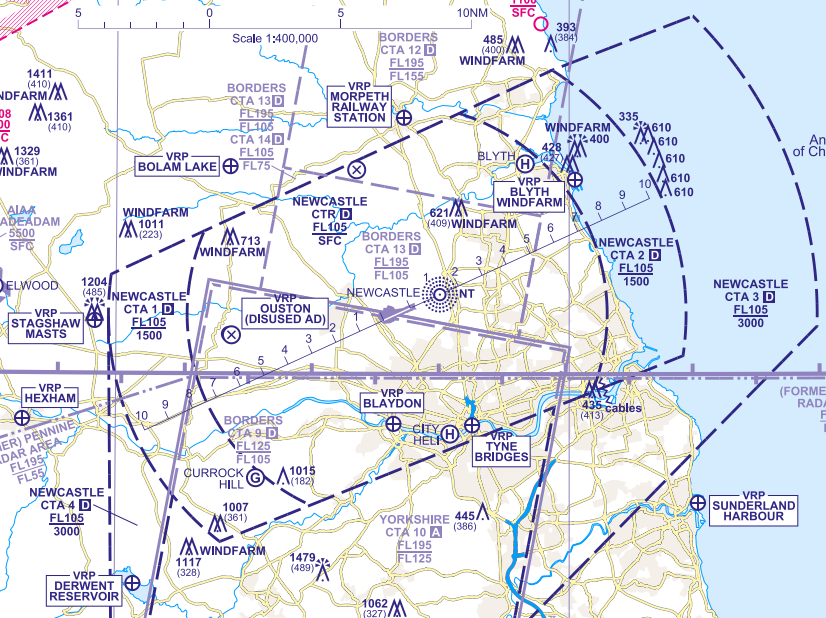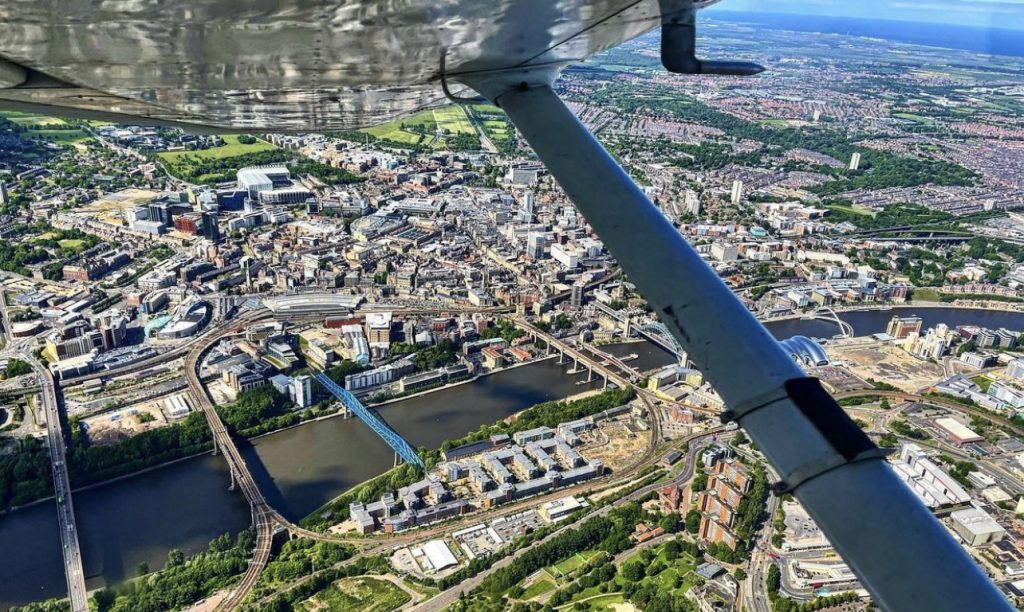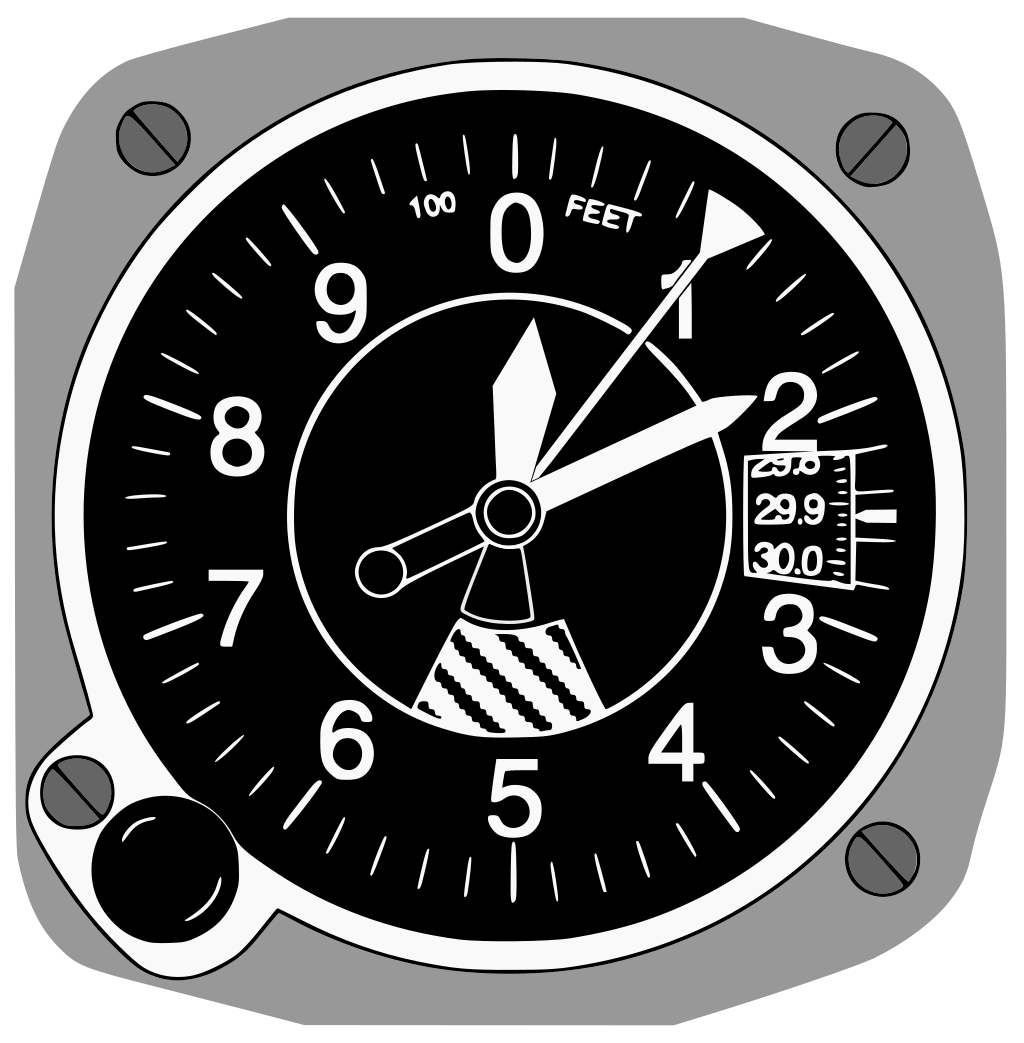
I arrived still buoyed by the joy of unexpectedly landing at the end of my second lesson. Perhaps even a little cocky. This flying stuff is easy! I even invited my wife and daughter to watch my take off.
The friend who recommended the flight school to me gave a bunch of great advice and a warning that certainly rang true on this lesson. He said: “sometimes you’ll have horrible lessons that will make you seriously consider walking away from flying.”
I hadn’t expected it to happen so soon in my flight training, nor to happen during take off – a stage of flight to which I had become pretty accustomed. Aviation has its way of punching the cockiness out of you.
Let’s just get it out the way then I’ll give my explanation / excuses:
It’s fair to say this is not how you should take off. You should never find yourself descending during the take off and climb. Here, I bounced once before we even left the ground, and then through a combination of wind and over-correction entirely on my part, we ended up with a windscreen full of runway again – and a throat full of stomach.
A litany of excuses
The gorgeous and amazing, 4-seater Reims-Cessna 172K with a gloriously powerful Rolls Royce 6-cylinder engine has been sold and is leaving the school soon <sad face>, so on this lesson, and all future lessons, I switched to the lighter (and more sensitive) Reims-Cessna F150H.
During taxi I noticed the rudder pedals / nose-wheel steering offered very little control authority and I had to rely on differential braking to stay straight on the backtrack (driving the wrong way down the runway so you can turn around and take off from it). Differential braking is not a wise way to steer when you’re taking off as it slows you down and has quite a severe yawing effect which again you don’t want during the take off roll. So in my head, as I pushed forward on the throttles, was whether or not I’d be able to steer effectively.
I should, if I’d had more presence of mind, have realised that at full power the rudder has a lot of airflow over it from the propeller and would have afforded much better steering authority, but my brain instead had been filled with doubt.
As I accelerated, the wind direction became variable, you can see the windsock waving from side to side, this meant I had a harder job keeping the little Cessna on the centre line. A small gust of wind lifted the plane off the runway momentarily, causing us to bounce, then my instructor asked me to apply some back pressure to lift off, which I did – only I added a little too much back pressure and the nose lifted a lot quicker than I’m used to (normally having to wait for a big heavy RR engine to tilt skywards).
At the same time we climbed above the trees which had been acting as a windbreak and a gentle crosswind became a gusting crosswind and the aircraft tipped to the right. I tried to arrest the nose-up pitching by pushing the controls forward while turning left to level the wings, only I did it too hard and too fast, which pitched the aircraft towards the ground.
What a numpty.
Thankfully, self preservation and the small amount of excellent training I’d received so far took over and I manged to avert a disaster and climb out, although (with my ego and nerves in tatters) not straight.
Radio Ga Ga
I didn’t have much time to dwell on my monumental cock-up / moment of impromptu learning because we were climbing away from a busy airfield with things to do.
I climbed out at 70 knots (Vy – the rate of best climb) to 500 feet indicated altitude (300ft above the airfield elevation) before raising the flaps. At 700ft altitude I turned left onto the crosswind leg of the circuit for runway 01.

At 1,000ft above the airfield, we levelled off and turned downwind for a few seconds before turning back over the runway we just took off from.
“Golf-Alpha-Whisky-Oscar-Tango, leaving the circuit, departing to the south, changing frequency Newcastle Radar 124.380” I said, reading another of my instructor’s handy radio chea- sheet cards.
I steered the aircraft to the south, following the A1 to Morpeth, which has a railway station that is a Visual Reporting Point (VRP), used for reporting your position to interested air traffic controllers. It is also the entry point into Newcastle Airport’s controlled airspace (with permission). We called Newcastle’s Automated Terminal Information Service (ATIS) to find out the meteorological conditions at the airport, this is usually changed hourly, unless conditions change rapidly, and each update has a ‘version’, denoted by a letter of the alphabet.

The current information was Echo, which you pass to the controller on first contract to show you’ve done the correct thing and listened to the ATIS.
“Newcastle Radar, Golf-Alpha-Whisky-Oscar-Tango with information Echo request transit of controlled airspace to the south and basic service.”
We were brief and to the point. Being an active commercial airport handling millions of passengers and thousands of airliners each year they can get very busy with far more important things than some dude in a small box with wings. Especially now that the summer rush has started.
To their credit, we immediately got a response. “Golf-Oscar-Tango, basic service, hold outside of controlled airspace, QNH 1026.”
Note that they chose to abbreviate our aircraft’s registration/callsign, a common way to speed up communications, but this is generally only permitted by ATC, not by the pilot.
A basic service is (oi, stop laughing in the back, you) a request to a controller to give information about the air around the airfield, including traffic reports (although is best effort, not guaranteed).
My instructor had taken control of the Cessna while I did the radio calls and he started an orbit overhead Morpeth Railway Station.
“Golf-Oscar-Tango cleared to enter controlled airspace, route to the west of runway 07 threshold.”
My instructor handed the controls back to me and replied to ATC, before giving me a heading and altitude to maintain. I flew towards Newcastle Airport, seeing its tall Emirates tower just a few hundred feet below and a number of airliners moving around with holidaymakers on board, which was extremely cool!
We passed the threshold (beginning) of runway 07 and were then routed to the Tyne Bridges, another VRP, and normally the exit of the control zone for north to south traffic, however, we were turning east to follow the River Tyne which skirts the southern edge of the controlled airspace. We told ATC of our intentions and were upgraded to a Radar service, which meant we were going to have the benefit of their radar tracking us and aircraft around us – with traffic advisory to avoid unsafe situations.
Tyne Bridges VRP
The Newcastle-Gateshead Quayside is famous for its bridges and they are even more impressive from 2,200ft.

We flew along the Tyne towards Tynemouth before turning to the north and following the coast, catching a great view of some large passenger ships at Tyne Dock from our elevated window on the world.
Traffic, 9 o’ clock!
I noticed a speck of black off to the left out my window, it was a plane. It was also heading straight for us.
“Traffic 9 o’ clock, same level, heading this way,” I said to my instructor.
“Visual.”
We watched it get closer and closer in our side window, but then it turned towards the south and we could see it was a Ryanair Boeing 737-800, correctly following the GIRLI departure off runway 07 (of which we had earlier passed the threshold), which would keep it safely clear of our path. And us clear of theirs!
As we passed north of the Blyth Windfarm The accommodating lady on Radar called us up again and said we were leaving her controlled airspace and we were to switch back to our airfield’s frequency. We repeated her instruction back to her, thanked her for her help and then changed frequency.
Next we practiced straight and level flight whilst doing FREDAC checks:
- F – Fuel – check quantity and that the tank selector is on the most full tank – in our C150 were just have an on/off switch
- R – Radio – active and standby frequencies appropriate
- E – Engine – temperatures and pressures (Ts and Ps) in the green range, mixture rich (or leaned in the cruise), ammeter charging, tachometer at appropriate RPMs, no warning lights
- D – Direction – you have two sources of direction in the cockpit: the magnetic compass and a gyroscope-driven “direction indicator” or “DI”. The magnetic compass is quite slow to respond to direction changes and is inaccurate in turns but straight and level it is accurate. Meanwhile the DI is quick to respond, retains more accuracy during turns, but suffers from gyroscopic precession, which requires it to be synchronised with the magnetic compass frequently.
- A – Altitude – Check you’re flying at the right altitude and on the correct pressure setting (more on that in a moment)
- C – Carburettor Heat – the carburettor on an aircraft vapourises fuel as it enters the engine cylinders. By doing so it reduces its pressure and therefore its temperature, lower temperature improves fuel burn, but it also means you can actually get ice in your carburettor! Not great when flying as this has a side-effect of stopping the engine… To prevent this, we turn on the carburettor heat (‘carb heat’) which pumped hot exhaust gas around the carb to keep it from icing. We turn this on every 20-30 minutes for 10 seconds.
Altitude or height, that is the Q
There are two ways to think about where you are vertically while flying, there’s your altitude, which is your height above mean-sea-level (MSL) and your height, which is how far you are off the ground (or water) below.
Altitude is used for separating aircraft from each other by using flight levels and given altitudes. To find the correct pressure setting for altitude, when you’re on the ground at your favourite airfield, turn knob on the altimeter until the altitude reads the airfield elevation.
At my flight school, the airfield elevation is 197ft (above MSL), so dialliang this into the Kollsmann Window gives you the pressure setting for altitude.

The pressure setting which gives you altitude is called the “QNH”.
If you’re on the ground and you rotate the knob so your altimeter shows 0 (zero) you can use this to know your height above the ground, but only at the airfield you’re at because the ground isn’t flat. The pressure setting which gives you your height, and reads 0 on the ground is called the “QFE”.
Approach
I performed an overhead join (see previous lesson), selected runway 01 (the one I had almost failed to take off from earlier) and flew the downwind leg at 1,000ft QFE (height). I turned left onto the base leg, starting my descent, and lowered the flaps following the ROI process from lesson 2.
After a disastrous take off I was absolutely sure my instructor wouldn’t let me land this time.
I lined up and was a little high and fast, I reduced the throttle to increase my descent rate and raised the nose to slow down. Once stable again at 70 knots I pointed the nose back towards the numbers at the end of the runway and it was looking quite good.
I came over the threshold still with a little bit more height than I should have, pulled back the throttle and raise the nose waiting for the wheels to touch down, which they did gently. “Wow, nice landing!” said my instructor. It almost made up for the earlier shenanigans…
